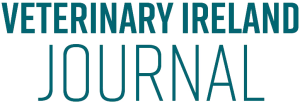The cold truth: understanding peri-operative hypothermia
Veterinary nurse mentor in Village Vets, Katie Dunne RVN BSc in Veterinary Nursing, VN Cert ECC, Prof Cert in Veterinary Education, provides a guide to understanding the complications associated with peri-operative hypothermia and how to prevent hypothermia from occurring
Thermoregulation is a homeostatic process, which allows the body to maintain a normal temperature, despite changes in external conditions. While under sedation and general anaesthesia, body heat redistributes to the surface of the skin due to anaesthesia-induced vasodilation and depression of the hypothalamic thermoregulatory system. While mild heat loss of 1-2OC, is not uncommon, the effects of hypothermia can be detrimental to patient stability under anaesthesia, recovery, and healing times. Hypothermia is described as a decrease in body temperature below 37OC .
Heat transfer and loss
Heat transfer occurs in four ways:
conduction – heat transfer through direct contact, e.g., cold operating table;
convection – heat transfer through the movement of fluids or gas, e.g., air currents;
radiation – heat transfer through electromagnetic waves;
evaporation – heat transfer through evaporating water, e.g., the use of surgical scrub solutions.
For as long as the patient’s body temperature is higher than the surrounding temperature, heat loss will occur by both radiation and conduction.
Radiation accounts for 60 per cent of heat loss. Core body heat is circulated to peripheral and subcutaneous blood vessels; this heat is then transferred into the environment through electromagnetic waves to cooler surroundings and surfaces, e.g., walls. The effects of radiation heat loss are worsened through larger areas of exposed body surface, e.g., clipped fur.
Evaporation is responsible for approximately 22 per cent of heat loss in surgical patients. The use of surgical scrub solutions and alcohol preparation solutions results in evaporative heat loss. Some evaporative heat loss will also occur during respiration, as warm, moist air is exhaled.
Heat loss occurs in three phases:
phase one: redistribution – occurs within the first 30 minutes of anaesthesia. Body temperature rapidly decreases as core heat is distributed to peripheral blood vessels;
phase two: linear decline – will last for two to three hours, with a slower, linear drop in body temperature as the rate of heat loss exceeds metabolic heat production;
phase three: plateau – heat loss and heat production occur at an equal rate and the patient reaches hypothermic equilibrium.
Patient risk factors
Advance consideration must be given to each patient and risk factors identified so that suitable steps can be taken to prevent hypothermia from occurring.

Table 1: Stages of hypothermia in sedated and anaesthetised patients.
Patients, such as small cats, rabbits, neonates and pediatric patients, which have a large body surface area to bodyweight ratio are particularly susceptible to heat loss through radiation and conduction.
Neonates and pediatrics have immature hypothalamus function and, therefore, are unable to adequately thermoregulate. Adipose tissue acts as an insulator and conducts approximately one third as readily as other tissues, slowing the rate of heat loss. With limited subcutaneous adipose tissue, these patients are at a higher risk of developing hypothermia.
Muscle mass plays a key role in generating heat during shivering. Geriatric patients with reduced muscle mass and reduced adipose tissue are particularly susceptible to hypothermia and have limited ability to generate heat.
Disease processes such as cardiac disease and renal failure may also contribute to hypothermia. Patients with hepatic disease may also see a marked decrease in temperature, as the heat produced by hepatic metabolic activity is reduced.
Procedural risk factors
Susceptibility to hypothermia can be further exacerbated by procedure type, medications used, and patient surgical preparation technique.
Patient preparation:
- clipping of hair – a necessary procedure to ensure surgical site sterility; however, excessive clipping increases the area of body surface exposed and promotes radiation heat loss;
- excessive wetting on skin and fur – while necessary to ensure surgical site sterility, this greatly increases heat loss by evaporation and will contribute to rapid Phase 1 (redistribution) heat loss.
Medication and equipment:
- breathing circuit type – non-rebreathing circuits (e.g., T-Piece), require higher fresher gas flow rates (FGF) to meet minimum metabolic oxygen requirements; oxygen stored in cylinders is cold and will greatly contribute to heat loss;
- medication use – some drugs contribute directly to hypothermia, e.g., acepromazine influences the α-adrenergic receptors which can result in vasodilatory effect and peripheral heat loss, and volatile anaesthetic agents, such as isoflurane, also contribute to vasodilation;
- other causes of hypothermia include: intravenous fluid therapy, cold operating tables, cool ambient room air.
Procedure type:
- open abdomen surgery – heat loss rapidly occurs in patients with open abdomen, in particular, procedures which require organ exteriorisation e.g., exploratory laparotomy for foreign body, gastric dilation, and volvulus;
- lavage fluid – fluid used to lavage the abdomen will contribute to convection heat loss;
- dentistry – fluid used to cool the dental scaler tip and drill may result in excessive wetting of the face and body of the patient, leading to convective heat loss.

Figure 1: Glasgow Composite Measure Pain Scale (Short Form).

Figure 2: Author’s image of a patient under anaesthesia with passive and active warming devices.
Complications of hypothermia
Hypothermia is one of the most common complications of anaesthesia and may have serious effects on patient stability under anaesthesia, recovery times, and surgical site healing.
Anaesthetic stability
Hypothermia affects many body systems and can have severe effects on anaesthetic stability.
Cardiovascular function: moderate to severe hypothermia depresses myocardial and ventricular function, decreasing cardiac output and resulting in bradycardia, arrhythmias, and hypotension. As hypothermia and cardiovascular effects worsen, the risk of cardiac arrest increases.
Respiratory function: Hypothermia will lead to respiratory depression. The patient will hypoventilate and tidal volume will decrease. Oxygen intake will decrease and the rate of carbon dioxide (CO2) clearance is significantly slowed. This results in CO2 accumulation (hypercapnia), which may develop into a respiratory acidosis, an acid-base disturbance.
Metabolic activity: The patient’s metabolic rate will decrease by approximately 10 per cent for every 1°C decrease in body temperature. Decreased metabolism will lead to reduced minimum alveolar concentration (MAC) requirements for volatile anaesthetic gases. Drug metabolism and elimination will be delayed, and anesthetic drug overdose may occur. As the patient’s temperature drops, so do their anaesthetic requirements.
Recovery times
Patient recovery times from anaesthesia are delayed due to decreased metabolic rates and drug elimination and depressed mentation. Shivering is an involuntary muscle tremor which generates heat. Cellular oxygen requirements increase during shivering and supplemental oxygen may be required to prevent hypoxia. Shivering can be painful for patients, as muscle contraction around the surgical site occurs. Pain scoring, using a recognised pain scoring chart, and adequate analgesia provision is essential.
Immune function and wound healing
Hypoventilation and hypotension will decrease oxygen delivery to the surgical site which may contribute to delayed wound healing. In addition, hypothermia impairs immune function by altering neutrophil and macrophage ability to migrate and fight infection and by inhibiting pro-inflammatory cytokine release which signals immune response, increasing the risk of surgical site infection (SSI).
Methods of warming
Assistance with thermoregulation during the peri-operative period is essential to improve anaesthetic stability, patient comfort, and recovery. Patient warming can either be passive where the aim is to maintain the patient’s current temperature and no active warming heat source is used (e.g., use of bubble wrap, additional blankets), or active where the temperature of the air and surfaces around the patient are increased (e.g., forced warm air blankets).
Caution must be taken when using active warming devices as thermal burns may occur. It is important to understand that the relationship between the skin’s surface temperature and the time taken to develop third degree burns is logarithmic, for example, at 45°C, it will take approximately 90 minutes to burn skin but only 10 minutes at 50°C. The severity of the burns can range from mild, superficial burns to severe, full thickness burns and require skin grafts.
Passive heating methods
Blankets: used to line kennels and procedures/operating room tables, this acts as a barrier between the patient and cold, metal tables. Concerns with blankets include hygiene; the blanket may be used for hospitalised and/or infectious patients then used in theatre with loose fibres and debris, this is a potential risk for SSIs. Theatre specific blankets, which are washed separately to kennel bedding is advised.
Bubble wrap: can be placed around the patient, between the blanket and patient or wrapped around extremities or the main portion of the body, if the patient is not undergoing an abdominal/ thoracic surgery.
Foil blankets: the aluminium coating reflects heat and traps the natural radiating heat from the body. These should be used as the outermost heating layer, to prevent heat generated naturally by the body and other heating agents from escaping. These are easily wiped clean, can be reused, and cut to size.
Clothing: socks on extremities (i.e., feet and tail) and coats on the main portion of the body, if abdomen/thorax is not undergoing surgery. As with blankets, debris, and loose fibres, could increase risk of SSIs. Theatre specific clothing, which is washed separately to kennel washing, is advised.
Buster bed: rectangular bean bag bed that can be used to position patients as well as insulate them. This acts as a thicker barrier layer between the patient and operating table and can be easily cleaned between patients.
Active heating methods
Forced air warming (FAW) devices: heated air is circulated through a blanket with perforations to deliver even heat distribution. They contain a built-in safety mechanism to ensure the chosen temperature setting is monitored and maintained, and they have a built-in fault alarm system to alert for any errors or deviations in temperature. With three to four temperature options, they can be used to maintain normothermia, actively warm hypothermic patients, and actively cool hyperthermic patients. They can therefore be used to prevent hypothermia from occurring.
Conductive blanket heating device: these devices use a conductive, polymer fabric which distributes heat evenly to the patient. It contains a heat sensor to ensure the correct temperature is delivered and triggers an alarm if there is deviation from the chosen temperature. Its non-porous covering ensures easy cleaning and disinfection between patients. As with FAW devices, multiple temperature options allow the conductive blanket to be used for maintaining normothermia.
Electric heat pad: electric heat mats are plugged into the main power source and typically do not have different temperature options. Heating mats may be of limited use in larger recumbent patients due to compression of the peripheral vessels that would distribute this heat. In many cases, the temperature cannot be easily measured, monitored, or altered, and may cause thermal burns if there are insufficient protective layers between the heat mat and the patient.
Heat mats should not be used during procedures where the patient is likely to become wet through irrigation or significant blood loss, e.g., exploratory laparotomy and dentistry. Wet fur and towels will facilitate the transfer of heat directly to the surface of the skin and exacerbate the risk of thermal burns.
Heat disc: these are hard discs, typically pink or red in colour, which are heated in a microwave to provide patient warmth. Due to uneven heat distribution in microwaves, they may cause thermal burns if not appropriately covered. If left in one position, the risk of thermal burns in recumbent, immobile patients are increased.

Figure 3: Author’s image of a patient receiving pre-anaesthetic passive warming.
The following active warming devices are NOT advised for use due to the high risk of thermal burns:
Hairdryer: a hairdryer is used to blow warm air over the patient, usually between two layers of blankets, similar to the action of an FAW blanket. The temperature cannot be easily measured and some hair dryers cannot be altered between cold, warm, and hot temperatures, creating a risk of causing thermal burns if the hair dryer is left in one place for too long.
Hot water bottle: these are used either near the patient during surgery, over the breathing circuit, or in the patient’s kennel during the post-operative recovery period. It is difficult to control the temperature of hot water bottles, and they often remain static against one area of the patient, increasing the potential for burns if there are insufficient protective layers between the hot water bottle and patient. There is also a risk for hot water leaking and causing thermal injury if there is damage to the cap seal, the cap isn’t tightly replaced, or in the case where a sharp instrument perforates the hot bottle.
Hot hands: these are latex gloves filled with water and heated in a microwave. They are typically placed over the breathing circuit to heat anaesthetic gases, on the fluid giving set, or wrapped and placed near the patient’s body. Microwaves do not evenly distribute heat and therefore effectiveness of warming with hot hands is variable. Thermal burns may occur if the hot hand is not appropriately wrapped with towels/blankets and, due to the fragile nature of latex gloves, there is a risk of the glove bursting and scalding both patients and staff. Furthermore, this use of gloves is not in line with the manufacturer’s intended purpose of use and burns developed through the use of hot hands may lead to legal challenges.
Preventative measures
Prevention is better than cure. The following steps are advised to minimise the risk of hypothermia developing and ensure patient safety is maintained throughout:
Record a baseline temperature for all patients at the time of admit, prior to medication administration - unless unsafe for the patient or staff to do so.
Begin passive warming with blankets immediately following sedation/ pre-medication.
An appropriately-sized pet coat can be applied while the patient is premedicated in the kennel - providing it is not causing undue stress.
Where heating mats are used in the kennel, a minimum of two layers of blanket should be between the patient and the heating mat, and the entirety of the mat should be covered. Patients must not be left unsupervised.
Place bubble wrap around the patient – providing it is not causing undue stress.
Express the patient’s bladder to prevent inadvertent bladder emptying during the procedure.
Avoid excessive fur clipping for procedures and excessive wetting of fur with surgical preparation solutions.
Ambient room temperature is the most significant factor in determining heat loss (radiation heat loss). To ensure staff comfort in the operating theatre while promoting heat retention for the patient, the room temperature should be maintained at 23°C with 50 per cent humidity.
Active warming must commence when the patient’s temperature falls below 36.5°C. Once the patient’s temperature reaches 37.2°C, active warming should cease, to prevent hyperthermia and other complications such as ‘warming afterdrop’, whereby cold peripheral blood returns to the central circulation, ultimately leading to further cooling of core body temperature and ‘rewarming shock’, whereby a rapid increase in temperature leads to sudden systemic vasodilation and hypotension.
Dentistry: keeping patients dry during dentals is a priority to maintain normothermia. To keep patients dry, cut a small hole in a puppy pad and place the patient’s snout through this hole with the absorbent side facing rostrally, so that only the mouth and nose will become wet.
Conclusion
Although hypothermia is a common complication of anaesthesia, the effects on patient stability, patient comfort, and wound healing should not be underestimated. For most patients, hypothermia can be prevented through understanding how heat loss occurs and the patient and procedural risk factors which are often encountered.
Available on request from author.
1. What term is given to heat transferred by direct contact with a surface?
- Convection
- Radiation
- Evaporation
- Conduction
2. At what temperature range is hypothermia considered moderate?
- 33.3°C - 35.4°C
- <33.3°C
- >36.6°C
- 35.5°C - 36.5°C
3. With every 1°C drop in body temperature, metabolic rate decreases by what percentage?
- 5 per cent
- 10 per cent
- 15 per cent
- 20 per cent
4. What term describes the first phase of heat loss?
- Redistribution
- Linear decline
- Plateau
- Reallocation
5. At what temperature should active warming cease?
- 37.8°C
- 38.0°C
- 37.2°C
- 37.0°C
ANSWERS: 1D; 2D; 3B; 4A; 5C.














